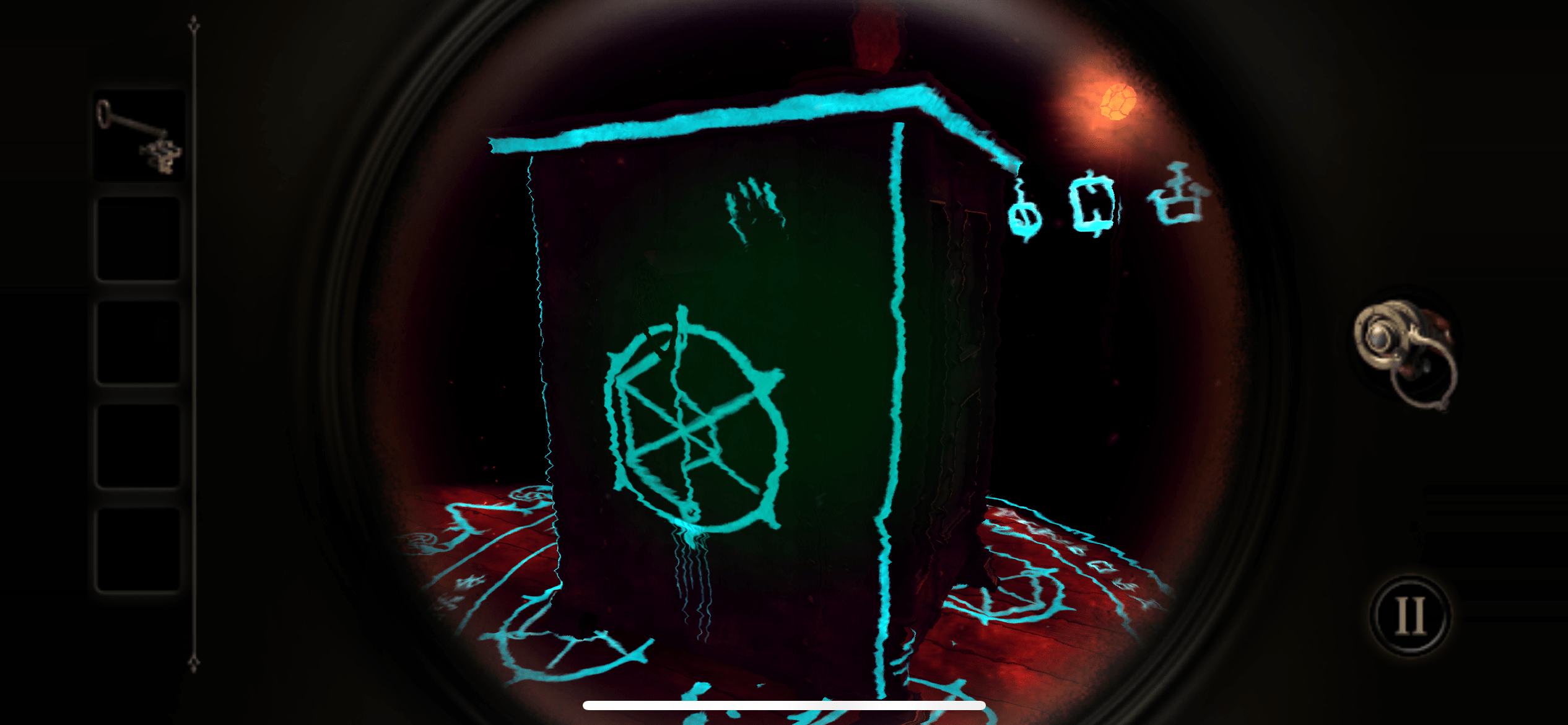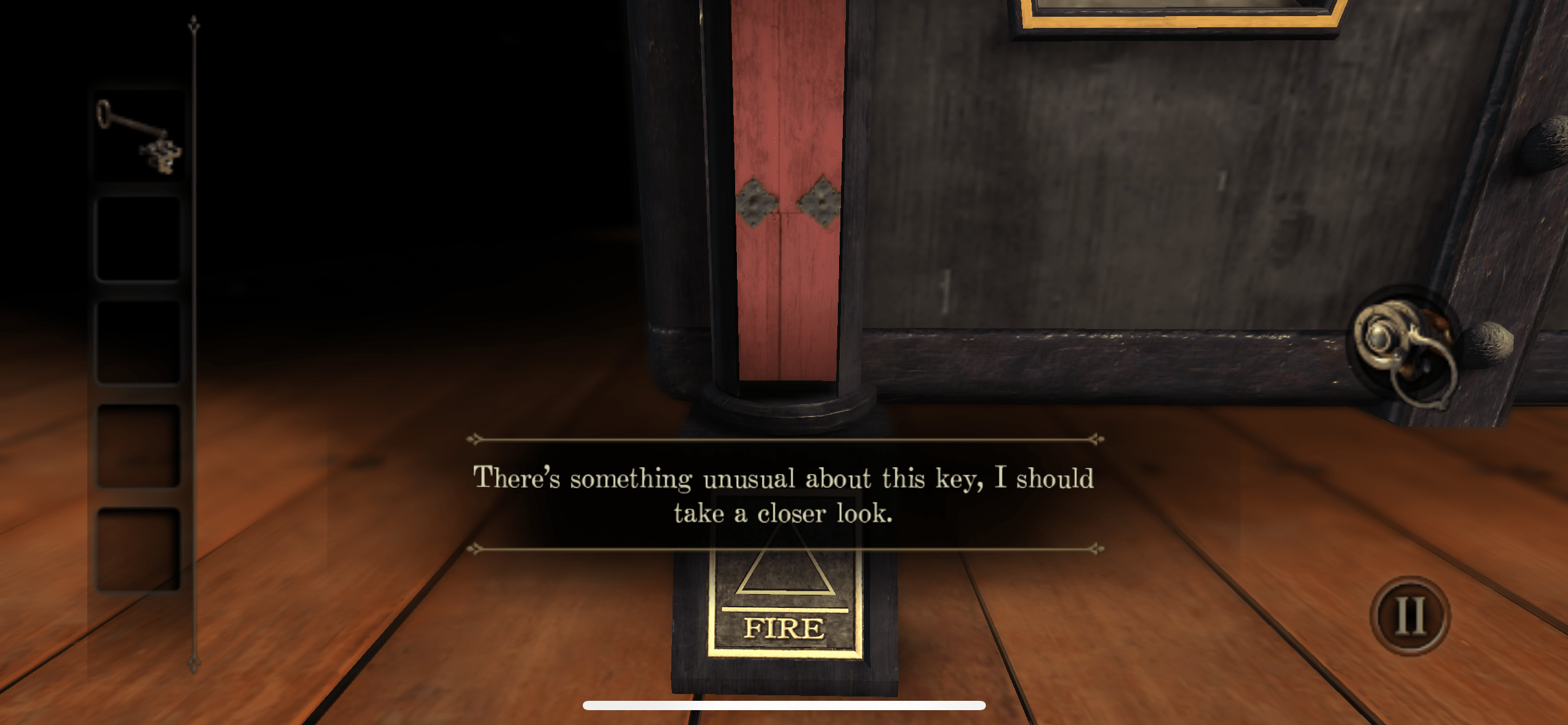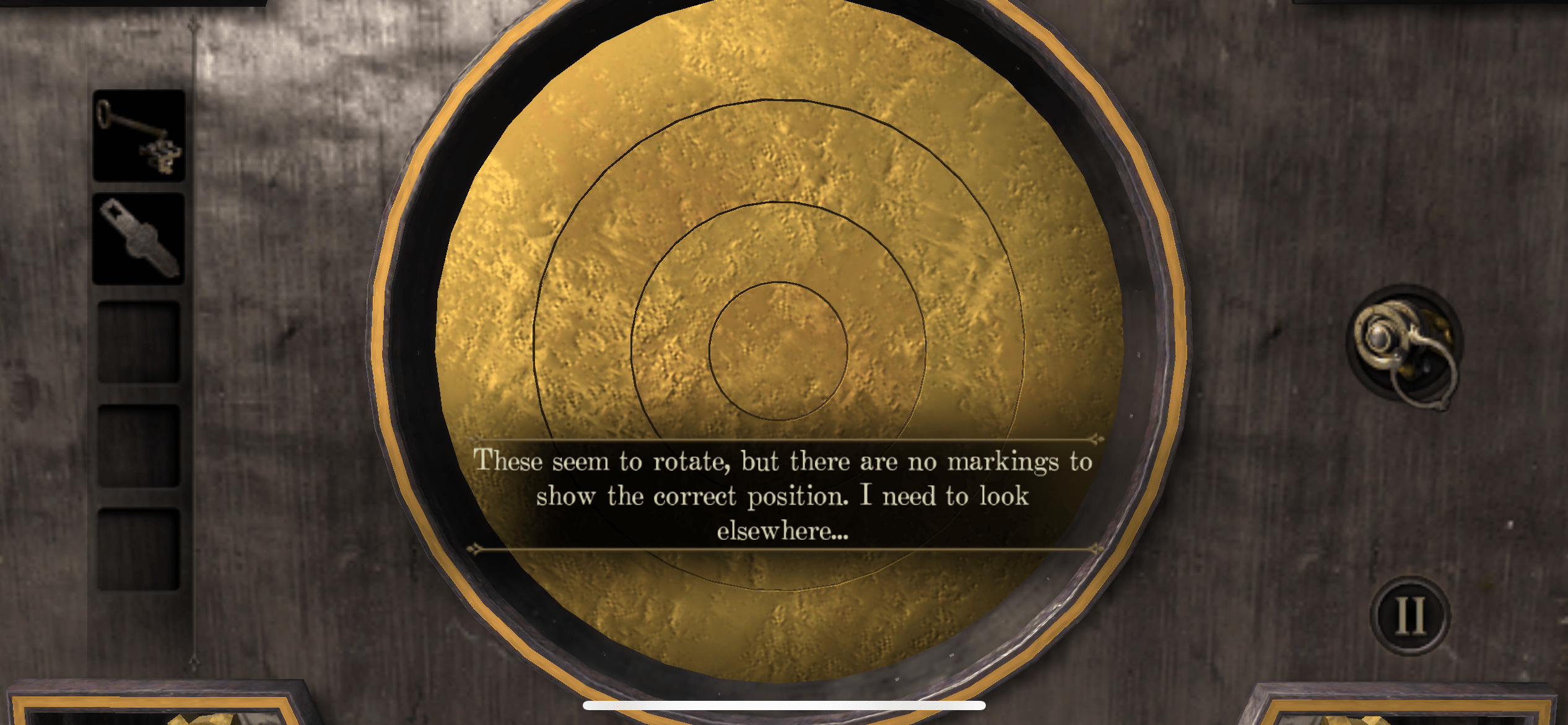Intro
The Room was developed by Fireproof Games and Humble Bumble and is available on IOS and Android. Their target audience are people aged 13+.
The mechanics of the puzzles in The Room contribute to the the atmosphere and engagement of the game because of its intuitive touch controls that incorporate real physics and their layering of puzzles.
Gameplay
The game begins with a tutorial of how to interact with the objects of the game. I think this mechanic of having to slide a letter out of an envelope or turn a key add to the fun and satisfaction players experience in the game. It is an aspect of the game I really enjoyed because it felt like I was there actually performing all of these actions. When compared to a game where you simply just tap on an item to use it, this feels more satisfactory as if you are actually solving the puzzle.

(Tutorial of how to slide the letter out of the envelope)
Additionally, the puzzles in this game were very layered and complex, making the game feel balanced and have a good amount of difficulty. It also made the game feel like Iw as making progress whenever I made a discovery as I knew it could be used for the next puzzle I needed to solve.
For instance, I found a symbol in a letter and later an eye piece with no lens. At first, I was confused as to what I was supposed to do with these items until I later found a lens for my eye piece and discovered I could use it to view symbols that weren’t visible without it. Using the complete eye piece and the symbol from the letter I was able to solve the puzzle.

Because the game had complex puzzles, another mechanic the game introduced were hints whenever items were discovered. For instance, When I obtained a weird looking key, the game prompted me to take a closer look. When I tapped on the key, I discovered I was able to modify it to fit into different keyholes. Without this prompting, it would’ve taken me much longer to figure this out and I would’ve been frustrated with the game.

(Hint appeared about key after obtaining it)
Another example of the complex puzzle and hints use in the game is the below image. In that image, there are no visible markings on the discs, but when using the eye piece we found, we were able to see that we had to rotate the discs to solve the puzzle.

(Hint about rotating discs after arriving at this level)
Conclusion

In conclusion, I thoroughly enjoyed this game because I felt immersed in the puzzle solving. I think a potential flaw of this game is that it is very long and there is not much narrative. The narrative relies on the player reading the letters they find throughout the gameplay, but personally, I wasn’t interested in reading these lengthy letters and preferred to just solve the puzzles on my own. However, I feel like the decision to give hints to players after a new item was found or a certain amount of time has passed was a good choice because it prevented players from getting stuck, given the puzzle’s complexity. The Room is similar to other puzzle-based games, like for example, Myst. However, it is different because the game is focused in a dark room where you have limited amount of movement and your focus is on one object. Overall, I really enjoyed the captivating experience this game provided.




